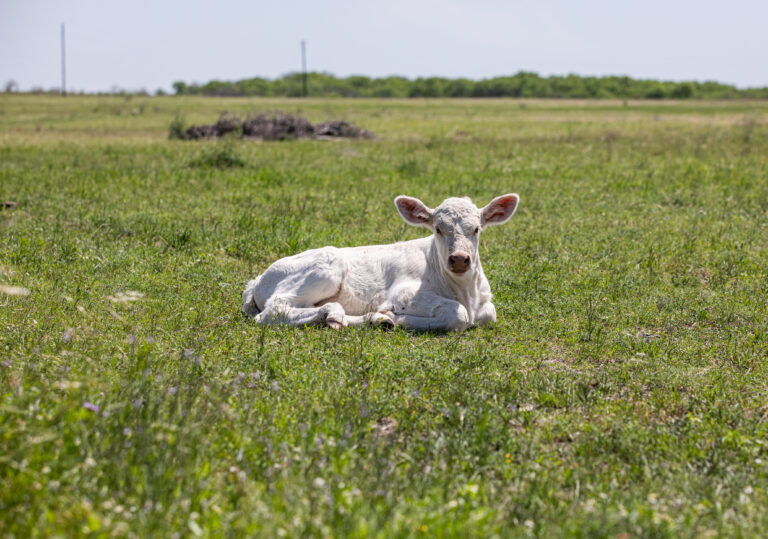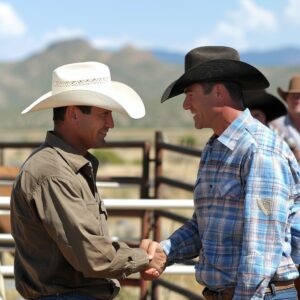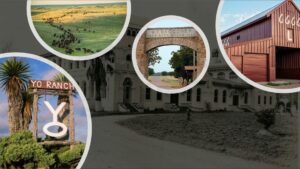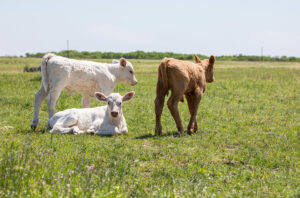The Intricacies of the 2-Cow Tax Loophole in California: Unveiling the Complexities
Introduction
Taxation is a fundamental aspect of modern society, serving as the financial backbone for essential public services, infrastructure development, and social welfare programs. However, within the intricate web of tax laws and regulations, there exist loopholes—legal provisions or strategies that allow individuals or entities to reduce their tax burdens or gain unintended advantages. One such intriguing loophole that has garnered significant attention, particularly in the agricultural sector of California, is the notorious “2-cow tax loophole.”
The concept of tax loopholes often evokes a sense of mystery and intrigue, as they represent a realm where legal boundaries blur, and financial strategies can lead to substantial savings. The allure of reducing tax liabilities within the confines of the law has long fascinated taxpayers and tax professionals alike. Yet, behind this allure lies a complex landscape of regulations, interpretations, and implications that shape the functioning of our tax system.
The 2-cow tax loophole, specifically rooted in California’s agricultural property taxation framework, has become a focal point of discussions and debates among policymakers, tax experts, and the public. Originating from historical agricultural tax policies, this loophole allows landowners to benefit from favorable tax treatment based on the number of cows they possess on their property. While seemingly straightforward on the surface, the intricacies of how this loophole operates, who benefits from it, and its broader impact on tax revenues and economic incentives merit a detailed exploration.
This article embarks on a comprehensive journey into the depths of the 2-cow tax loophole, unraveling its origins, mechanisms, exploitation, criticisms, legal considerations, case studies, and future implications. By delving into the nuances of this loophole, we aim to shed light on its complexities, evaluate its pros and cons, and contribute to a more informed discourse on tax policy, fairness, and economic incentives. Join us as we navigate through the maze of tax regulations and unravel the mysteries of the 2-cow tax loophole in California.

Understanding the 2-Cow Tax Loophole
Understanding the 2-Cow Tax Loophole in California requires a deeper exploration into its historical context, legal framework, operational mechanisms, and implications for landowners and the state’s tax revenue. This section expands on these aspects to provide a comprehensive understanding of how this loophole functions.
Historical Context
The roots of the 2-Cow Tax Loophole can be traced back to California’s agricultural heritage and the state’s efforts to support and incentivize farming activities. Historically, agricultural land has enjoyed preferential tax treatment due to its contribution to the state’s economy and rural development. Property tax assessments for agricultural land are often based on factors such as land use, soil quality, and crop or livestock production.
The concept of tying tax rates to livestock ownership, particularly cows, has its origins in the idea of assessing agricultural land’s productivity and economic value. Landowners with larger livestock holdings were presumed to be more actively engaged in agricultural activities, thus qualifying for lower tax rates as an incentive to maintain or expand their operations.
Legal Framework
The legal framework governing the 2-Cow Tax Loophole in California is primarily rooted in the state’s property tax laws and regulations. Under California’s Proposition 13, passed in 1978, property tax assessments are based on the property’s assessed value at the time of purchase, with limited annual increases thereafter. Agricultural land is subject to special assessment rules, including provisions related to livestock ownership and land use.
The California Revenue and Taxation Code provides specific guidelines for assessing agricultural property taxes, including provisions related to livestock counts. For example, certain categories of agricultural land are designated based on the number of cows present, with corresponding tax rates assigned to each category. This creates an incentive for landowners to manage their livestock populations strategically to benefit from lower tax rates.
Operational Mechanisms
The operational mechanisms of the 2-Cow Tax Loophole involve categorizing agricultural land into different tax brackets based on cow counts. These categories typically range from zero cows to various thresholds, such as 2-5 cows, 6-10 cows, and 11 or more cows. Each category is associated with a specific tax rate, with higher cow counts generally leading to lower tax rates.
Landowners can influence their tax assessments by adjusting their cow populations or entering into leasing agreements with livestock owners to temporarily increase their cow counts during tax assessment periods. This practice allows them to benefit from lower tax rates without necessarily having a sustained or significant agricultural presence on their land.
Implications for Landowners and Tax Revenue
For landowners, the implications of the 2-Cow Tax Loophole vary depending on their agricultural activities, land holdings, and tax planning strategies. Those with larger livestock operations can leverage the loophole to achieve substantial tax savings, thereby reducing their overall tax burden and improving their financial bottom line.
However, smaller landowners or those with limited agricultural activities may face challenges or disadvantages under this loophole. They may not have the resources or incentives to maintain sizable livestock populations solely for tax purposes, leading to comparatively higher tax rates and potential economic burdens.
From the perspective of tax revenue and state finances, the 2-Cow Tax Loophole can have mixed implications. While it may result in reduced tax revenues from certain landowners benefiting from lower tax rates, it also contributes to supporting agricultural activities, job creation, and rural development. Balancing these competing interests requires careful consideration and ongoing evaluation of the loophole’s impact on the broader economy and tax system.
Understanding the 2-Cow Tax Loophole in California involves recognizing its historical context, legal foundations, operational mechanisms, and implications for landowners and tax revenue. While it offers incentives for agricultural activities and tax savings for some landowners, it also raises questions about fairness, equity, and fiscal sustainability. Addressing these complexities requires a nuanced approach that balances the interests of various stakeholders and ensures the integrity of the tax system while promoting economic growth and rural prosperity.
Exploitation of the Loophole
The exploitation of the 2-cow tax loophole is not uncommon in California. Landowners, particularly those with large agricultural holdings, have been known to leverage this loophole to significant advantage. By adjusting their cow numbers or entering into leasing arrangements with livestock owners, they can lower their property tax assessments and ultimately pay less in taxes.
One of the primary benefits for those exploiting the loophole is reduced tax liability, leading to cost savings and increased profitability. This can be especially advantageous for agricultural businesses operating on tight margins. However, critics argue that such exploitation can lead to inequities in the tax system, with certain property owners benefiting disproportionately compared to others.
Criticisms and Controversies
The 2-cow tax loophole is not without its share of criticisms and controversies. One of the main arguments against this loophole is its potential to create unfairness within the tax system. Critics point out that landowners with larger cow populations can enjoy significantly lower tax rates compared to those with fewer cows, regardless of the actual value or use of the land.
Moreover, there are concerns about the potential for abuse and manipulation of cow numbers solely for tax purposes. Some landowners may artificially inflate their cow counts or engage in questionable leasing arrangements to exploit the loophole, leading to distortions in the agricultural sector and undermining the integrity of the tax system.
On the other hand, proponents of the loophole argue that it incentivizes agricultural activities and investment in the sector. By providing tax benefits based on agricultural production, the loophole encourages landowners to maintain or expand their operations, leading to economic growth, job creation, and rural development.
Legal and Policy Considerations
The legal and policy landscape surrounding the 2-cow tax loophole is complex and evolving. California’s tax laws governing agricultural property assessments are subject to periodic reviews and revisions, aiming to strike a balance between incentivizing agricultural activities and ensuring tax fairness.
Currently, there is ongoing debate among policymakers regarding the future of the 2-cow tax loophole. Some advocate for its reform or closure to address perceived inequities and revenue losses, while others argue for its retention based on its role in supporting the agricultural sector.
Table 1: Comparison of Tax Rates under the 2-Cow Tax Loophole
| Cow Count | Tax Rate (%) |
| 0-1 | 1.5 |
| 2-5 | 1.2 |
| 6-10 | 0.8 |
| 11+ | 0.5 |
Table 1 illustrates the progressive reduction in tax rates based on cow counts under the 2-cow tax loophole. Landowners with higher cow populations benefit from significantly lower tax rates compared to those with fewer cows.
Case Studies
Examining specific case studies can provide insights into the real-world implications of the 2-cow tax loophole. For instance, consider a large agricultural estate with 50 cows under its ownership. By exploiting the loophole and categorizing the property based on cow counts, the estate manages to reduce its property tax rate from 1.5% to 0.5%, resulting in substantial tax savings annually.
Conversely, a smaller agricultural property with only two cows faces a higher tax rate of 1.2%, leading to comparatively higher tax burdens. Such disparities highlight the potential impact of the 2-cow tax loophole on different landowners and agricultural enterprises.

The Future of the 2-Cow Tax Loophole
The future of the 2-cow tax loophole in California is a topic of considerable debate and speculation. As policymakers, tax experts, and stakeholders grapple with its implications, several key factors and potential scenarios shape the ongoing discourse.
Reform and Closure
One potential trajectory for the 2-cow tax loophole is reform or closure. Advocates for tax fairness and revenue optimization argue that the loophole leads to inequities in the tax system, allowing certain landowners to benefit disproportionately. They propose reforms such as revising the tax categorization criteria, imposing stricter regulations on cow count reporting, or phasing out the loophole gradually.
Reform efforts could aim to create a more balanced and transparent tax system while addressing concerns about abuse and manipulation. By closing loopholes that provide undue advantages to specific groups, policymakers seek to promote tax equity and ensure that all taxpayers contribute fairly based on their property values and usage.
Preservation with Modifications
On the other hand, proponents of the 2-cow tax loophole contend that it plays a vital role in supporting agricultural activities and rural economies. They argue that the tax benefits provided under the loophole incentivize landowners to maintain or expand their agricultural operations, leading to job creation, economic growth, and environmental stewardship.
In this scenario, the focus may shift towards modifying the loophole rather than eliminating it entirely. This could involve refining the criteria for qualifying under the loophole, implementing safeguards against abuse, or introducing mechanisms to ensure that tax benefits align with genuine agricultural activities and contributions to the community.
Continued Debate and Evaluation
Regardless of the direction taken, the future of the 2-cow tax loophole is likely to involve continued debate, evaluation, and adaptation. Policymakers will need to assess the effectiveness of any reforms or modifications in achieving desired outcomes such as tax fairness, revenue stability, and agricultural sustainability.
Monitoring and data analysis will play a crucial role in understanding the impact of changes to the loophole. Stakeholders from various sectors, including agriculture, taxation, advocacy groups, and government agencies, will contribute to ongoing discussions and provide insights into the real-world implications of policy decisions.
Collaboration and Stakeholder Engagement
Collaboration and stakeholder engagement will be key drivers in shaping the future of the 2-cow tax loophole. Policymakers must engage with a diverse range of stakeholders, including landowners, farmers, agricultural organizations, tax experts, and community representatives, to gather input, address concerns, and build consensus on potential reforms or strategies.
Transparency, communication, and inclusivity will be essential principles guiding these collaborative efforts. By fostering dialogue, soliciting feedback, and considering diverse perspectives, policymakers can develop solutions that are informed, effective, and supported by the broader community.
Balancing Competing
Interests
Ultimately, the future of the 2-cow tax loophole hinges on striking a delicate balance between competing interests. While tax fairness, revenue considerations, and regulatory integrity are paramount, policymakers must also recognize the role of the agricultural sector in driving economic vitality, food security, and environmental sustainability.
Balancing these interests requires a nuanced approach that acknowledges the complexity of the issues at hand. Flexibility, adaptability, and a willingness to reassess policies based on evolving circumstances will be essential in navigating the path forward for the 2-cow tax loophole in California.
The future of the 2-cow tax loophole in California is multifaceted and dynamic, shaped by ongoing debates, policy developments, and stakeholder engagement. Whether through reform, preservation with modifications, or a combination of strategies, policymakers face the challenge of ensuring a fair, efficient, and sustainable tax system that supports agricultural vitality while addressing concerns about equity and integrity.
As discussions unfold and decisions are made, collaboration, data-driven analysis, and inclusive decision-making processes will be crucial in charting a course that balances competing interests and fosters a thriving and equitable tax environment for all stakeholders.
Conclusion
The 2-cow tax loophole in California encapsulates a myriad of complexities and considerations that extend beyond mere tax savings. It represents a nexus of economic incentives, regulatory frameworks, and societal values, each vying for attention and resolution. As this article has explored, understanding the nuances of this loophole is essential for stakeholders ranging from policymakers to individual taxpayers.
At its core, the 2-cow tax loophole embodies the broader debate around tax fairness and equity. While it offers tangible benefits to landowners and businesses operating in the agricultural sector, it also raises valid concerns about the integrity of the tax system and the distribution of tax burdens. Critics argue that such loopholes create disparities, allowing certain entities to enjoy preferential treatment while others shoulder a disproportionate share of tax responsibilities.
Conversely, proponents of the loophole highlight its role in incentivizing agricultural activities and investment. By providing tax incentives based on production metrics such as cow counts, the loophole encourages landowners to engage in productive activities that contribute to the economy, create jobs, and sustain rural communities.
The legal and policy landscape surrounding the 2-cow tax loophole is dynamic, with ongoing discussions and debates shaping its future trajectory. Policymakers face the challenge of balancing competing interests, weighing the benefits of incentivizing agricultural growth against the imperative of tax fairness and revenue adequacy.
As stakeholders navigate these complexities, collaboration and dialogue are crucial. Finding common ground requires a comprehensive understanding of the loophole’s implications, including its impact on tax revenues, economic behavior, and social equity. Moreover, any potential reforms or changes must be carefully crafted to avoid unintended consequences and ensure a smooth transition for affected parties.
In conclusion, the 2-cow tax loophole in California serves as a microcosm of broader tax policy challenges facing modern societies. It underscores the need for nuanced approaches that strike a balance between incentivizing desirable behaviors, promoting economic growth, and upholding principles of fairness and transparency within the tax system. Only through informed dialogue, thoughtful analysis, and collaborative decision-making can sustainable solutions be crafted to address the complexities inherent in tax policy and administration.
.

A Comprehensive Guide to Financing Land
A Comprehensive Guide to Financing Land: Strategies, Considerations, and Steps Introduction Land has always been a symbol of stability, opportunity, and prosperity. From ancestral homesteads

Mastering Land Sales: A Comprehensive Guide to Selling Your Property
Mastering Land Sales: A Comprehensive Guide to Selling Your Property Introduction The process of selling land is often perceived as a complex and challenging endeavor,

Legal Checklist for Ranch Investments
Legal Checklist for Ranch Investments In ranch investments, legal considerations are the bedrock upon which successful transactions and operational endeavors are constructed. Ranching ventures are

Is 10 Acres Considered a Ranch? Debunking Common Misconceptions
Is 10 Acres Considered a Ranch? Debunking Common Misconceptions 1. Introduction Ranching, with its iconic imagery of wide-open spaces, cowboys herding cattle, and sprawling homesteads,

The Top Five Largest Ranches in Texas: A Deep Dive into the Heart of Ranching Heritage
The Top Five Largest Ranches in Texas: A Deep Dive into the Heart of Ranching Heritage Introduction Texas, often hailed as the heart of ranching

The Intricacies of the 2-Cow Tax Loophole in California: Unveiling the Complexities
The Intricacies of the 2-Cow Tax Loophole in California: Unveiling the Complexities Introduction Taxation is a fundamental aspect of modern society, serving as the




